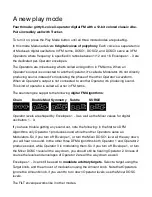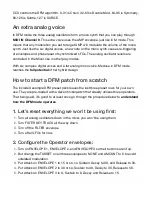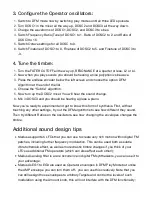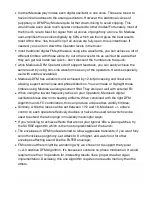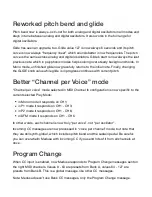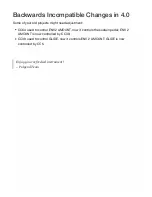
3. Configure the Operator oscillators:
1.
Switch to DFM mode now by switching play modes until all three LEDs pulsate.
2.
Turn DOSC1 in the mixer all the way up, DOSC2 and DOSC3 all the way down.
3.
Change the waveforms of DOSC1, DOSC2, and DOSC3 to sines.
4.
Switch Frequency Ratio (Tune) of DOSC1 to 1, Ratio of DOSC2 to 2, and Ratio of
DOSC3 to 16.
5.
Switch Octave settings for all DOSC to 0.
6.
Switch Finetune of DOSC1 to 0, Finetune of DOSC2 to 5. and Finetune of DOSC3 to
-3.
4. Tune the timbre:
1.
Turn the FILTER CUTOFF all the way up, RESONANCE at a quarter or less. L2 or L4.
2.
Now when you play sounds you should be hearing a nice polyphonic sinewave.
3.
Press the endless encoder below the left screen and choose the option DFM
Algorithm at the end of the list.
4.
Choose the “Subtle” algorithm.
5.
Now turn up the DOSC2 mixer. You will hear the sound change.
6.
Mix in DOSC3 and you should be hearing a glass e-piano.
Now you’re ready to experiment and get to know this form of synthesis. First, without
touching any other settings, try out the DFM algorithms to see how di
ff
erent they sound.
Then try di
ff
erent Ratios on the oscillators, see how changing the envelopes changes the
timbre.
Additional sound design tips
Medusa supports 5 LFOs that you can use to create very rich motion within digital FM
patches, including further frequency modulation. This can be used both as subtle
vibrato/tremolo e
ff
ect, as well as more drastic timbre changes if you think of your
LFOs as additional FM operators (which can also a
ff
ect each other!);
Medusa’s analog filter is a rare occurrence in digital FM synthesizers, you can use it to
your advantage;
Medusa’s EG1 to EG3 are used as Operator envelopes in DFM Play Mode but unlike
the AMP envelope you can turn them o
ff
- you can use this creatively. Note that you
can still assign those envelopes to arbitrary Targets and control the levels of such
modulation using the Amount knob, this will not interfere with the DFM functionality;


